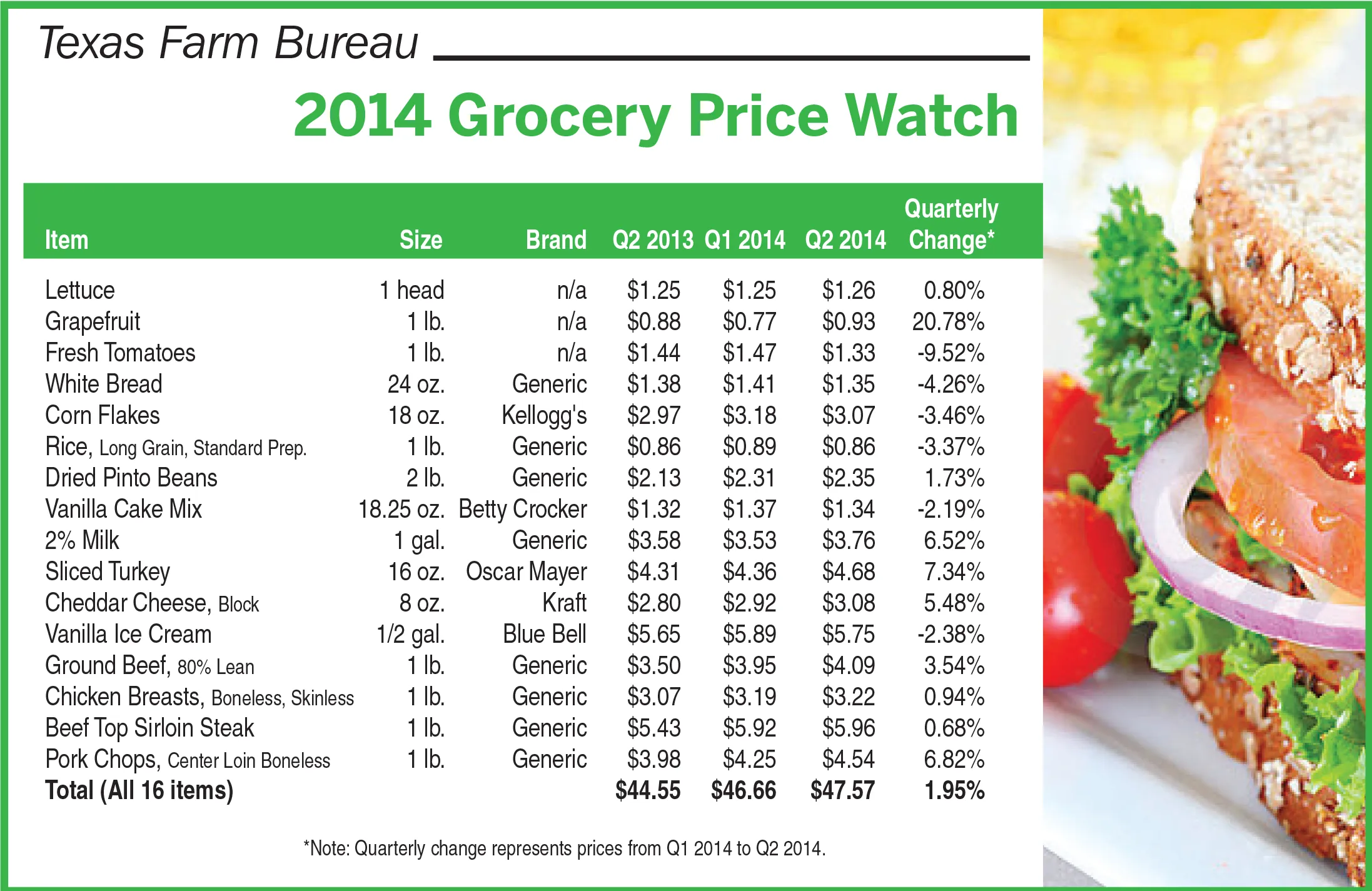New Year, New Savings: Chicago Grocery Price Trends to Watch in 2026
Navigate 2026's grocery price landscape with data-driven insights and strategic savings plans specifically tailored for Chicago families facing continued economic pressures.


New Year, New Savings: Chicago Grocery Price Trends to Watch in 2026
As Chicago families prepare for another year of economic challenges, understanding grocery price trends for 2026 has never been more critical. With Illinois families already paying 17% more than the national average, strategic grocery planning isn't just smart—it's essential for household financial survival.
Recent economic forecasts paint a complex picture for Chicago's grocery landscape in 2026. While some categories may see price stabilization, others are projected to continue their upward trajectory, making informed shopping strategies crucial for every household.
The Economic Reality: Chicago's Unique Grocery Price Challenges
Chicago's grocery market operates under unique economic pressures that distinguish it from national trends. The city's geographic position as a transportation hub, combined with higher operational costs and municipal taxes, creates a pricing environment that consistently exceeds national averages.
According to recent economic analysis, Chicago families already pay $2,040 extra annually compared to national grocery averages. This premium is expected to persist or potentially increase in 2026, making strategic shopping more vital than ever.
Labor Market Impacts on 2026 Pricing
Illinois's minimum wage increases, while beneficial for workers, will contribute to operational cost pressures for retailers throughout 2026. Major grocery chains, including Jewel-Osco, are expected to pass these costs to consumers through gradual price adjustments across multiple categories.
Service departments like delis, bakeries, and prepared foods are anticipated to see the most significant price impacts, with increases potentially ranging from 3-7% throughout the year. Smart shoppers should adjust their purchasing patterns to focus on raw ingredients rather than prepared items when possible.
Category-by-Category Price Projections for 2026
Produce: Weather-Dependent Volatility
Fresh produce prices in Chicago will remain highly susceptible to climate-related supply disruptions throughout 2026. California drought conditions and extreme weather events in key growing regions are expected to create periodic price spikes, particularly for:
- Leafy greens (lettuce, spinach, kale): 15-25% seasonal fluctuations
- Berries and stone fruits: 10-20% premium during off-seasons
- Root vegetables: More stable, 2-5% annual increases expected
Strategy: Focus on seasonal, locally-grown produce when possible, and consider frozen alternatives during peak price periods. The Jewel-Osco Coupon Clipper browser extension can help you automatically capture produce coupons during high-price periods.
Protein: Continued Pressure with Strategic Opportunities
Meat and poultry prices in Chicago are projected to experience moderate increases throughout 2026, driven primarily by feed costs and processing facility operational expenses. However, strategic shoppers can navigate these increases effectively:
- Beef: 4-8% annual increase expected, with ground beef remaining most affordable
- Pork: 3-6% increase projected, with significant sale opportunities during promotional periods
- Poultry: 2-5% increase anticipated, maintaining its position as the most budget-friendly protein option
- Fish/Seafood: 6-10% increases expected due to supply chain and environmental factors
Savings Opportunity: Stock up during major promotional periods, particularly around holidays and seasonal events. Utilize your freezer strategically, and consider the comprehensive coupon stacking strategies to maximize protein savings.
Dairy and Refrigerated Items: Steady Increases
Dairy products will see consistent but moderate price increases throughout 2026, primarily due to feed costs and transportation expenses. Expected increases include:
- Milk: 3-5% annual increase
- Cheese: 4-7% increase, with artisanal varieties seeing steeper climbs
- Yogurt: 3-6% increase, with organic options experiencing higher premiums
- Eggs: 5-10% increase, subject to supply disruptions
Packaged and Shelf-Stable Goods: Inflation Moderation
Packaged foods are expected to see more moderate price increases in 2026 as supply chains stabilize and commodity costs level off. Anticipated increases:
- Canned goods: 2-4% annual increase
- Pasta and grains: 1-3% increase
- Snack foods: 3-6% increase
- Condiments and sauces: 2-5% increase
2026 Strategic Shopping Framework
The 80/20 Price Protection Strategy
Implement an 80/20 approach to grocery shopping in 2026: allocate 80% of your budget to sale items and store brands, reserving 20% for full-price necessities and occasional treats. This strategy can reduce overall grocery spending by 20-30% throughout the year.
Digital-First Coupon Strategy
The evolution of digital couponing continues to accelerate, with manufacturer and store coupons increasingly moving to digital platforms. Top grocery coupon apps and browser extensions will become even more essential in 2026 as physical coupon availability decreases.
The Jewel-Osco Coupon Clipper browser extension represents the future of grocery savings, automatically identifying and applying available digital coupons during online shopping. This technology ensures you never miss savings opportunities, which becomes crucial as coupon values increase to offset rising base prices.
Seasonal Shopping Calendar for 2026
Plan major purchases around predictable sales cycles:
- January-February: Post-holiday clearances on baking supplies and premium items
- March-April: Spring cleaning products and early seasonal produce
- May-June: Grilling supplies and summer entertaining essentials
- July-August: Back-to-school promotions and canning supplies
- September-October: Harvest season produce and holiday baking prep
- November-December: Holiday promotional periods and bulk purchasing opportunities
Store Brand Optimization
Private label products will offer even greater value propositions in 2026 as manufacturers face continued cost pressures. Jewel-Osco's Signature SELECT, Open Nature, and O Organics brands consistently provide 15-30% savings over national brands with comparable or superior quality.
Focus private label purchasing on:
- Staple items (rice, pasta, canned goods)
- Cleaning and household products
- Basic dairy and refrigerated items
- Frozen vegetables and fruits
Budget Protection Strategies for Different Income Levels
Lower-Income Households
For families utilizing SNAP benefits, stretching food dollars requires strategic planning. Focus on:
- Maximum utilization of digital coupons and store loyalty programs
- Bulk purchasing during sales for non-perishable items
- Prioritizing nutrient-dense, cost-effective ingredients
- Leveraging food banks and community resources during high-price periods
Middle-Income Families
Middle-income Chicago families should focus on:
- Diversifying shopping locations (Jewel-Osco for sales, discount retailers for staples)
- Investing in freezer space for bulk purchasing opportunities
- Meal planning around sales cycles and seasonal availability
- Building emergency food reserves during low-price periods
Higher-Income Households
Even affluent families benefit from strategic grocery planning:
- Focus on organic and premium products during promotional periods
- Utilize cashback credit cards and loyalty program benefits
- Consider subscription services for frequently-used items
- Support local producers while maintaining cost awareness
Technology and Automation in 2026 Grocery Savings
The grocery technology landscape continues evolving, with automated coupon applications becoming standard practice for savvy shoppers. Browser extensions like the Jewel-Osco Coupon Clipper eliminate the manual effort of coupon hunting while ensuring maximum savings capture.
Mobile apps will continue expanding their feature sets throughout 2026, offering:
- Real-time price comparisons across multiple retailers
- Automated meal planning based on current sales
- Predictive pricing alerts for frequently purchased items
- Integration with smart home devices for automated reordering
Community Resources and Support Networks
Chicago's diverse communities offer numerous resources for families struggling with grocery costs:
- Neighborhood food cooperatives providing bulk purchasing power
- Community gardens offering fresh produce at reduced costs
- Cultural organizations hosting group purchasing initiatives
- Local food banks adapting to serve working families facing budget pressures
Building connections within your community can provide access to group purchasing opportunities, shared transportation to discount retailers, and valuable local knowledge about the best deals and timing.
Looking Forward: Building Long-Term Grocery Resilience
Success in navigating 2026's grocery price environment requires thinking beyond individual shopping trips to develop comprehensive household food strategies:
Kitchen Infrastructure Investment
Consider investing in tools that support cost-effective cooking:
- Quality freezer space for bulk purchasing and batch cooking
- Food dehydrator or canning equipment for preserving seasonal abundance
- Slow cookers and pressure cookers for economical protein preparation
- Vacuum sealing equipment for extended food storage
Skill Development
Develop cooking skills that maximize ingredient value:
- Learn to prepare proteins from less expensive cuts
- Master seasoning and flavor development with basic ingredients
- Understand food preservation techniques
- Practice portion control and leftover transformation
Financial Planning Integration
Integrate grocery budgeting with overall household financial planning:
- Track grocery spending patterns throughout the year
- Build grocery reserves during lower-cost periods
- Consider grocery spending in relation to other household budget categories
- Plan for seasonal variations in food costs
The Bottom Line: Proactive Planning Pays Off
Chicago families who approach 2026 with strategic grocery planning will maintain better financial stability despite continued price pressures. The combination of digital tools, community resources, and informed shopping strategies can effectively counteract much of the anticipated price inflation.
The key lies in starting early, staying informed about local and national economic trends, and remaining flexible in shopping and eating patterns. By treating grocery shopping as a strategic household management function rather than a routine errand, Chicago families can maintain food security while protecting their overall financial health.
Remember, every dollar saved on groceries is a dollar available for other family priorities. In an environment of continued economic uncertainty, these savings become even more valuable for building household resilience and financial security.
As we move through 2026, stay connected to resources like this blog, utilize technology tools like the Jewel-Osco Coupon Clipper, and engage with your community to share strategies and support. Together, Chicago families can successfully navigate whatever economic challenges lie ahead while maintaining the quality of life our diverse city deserves.